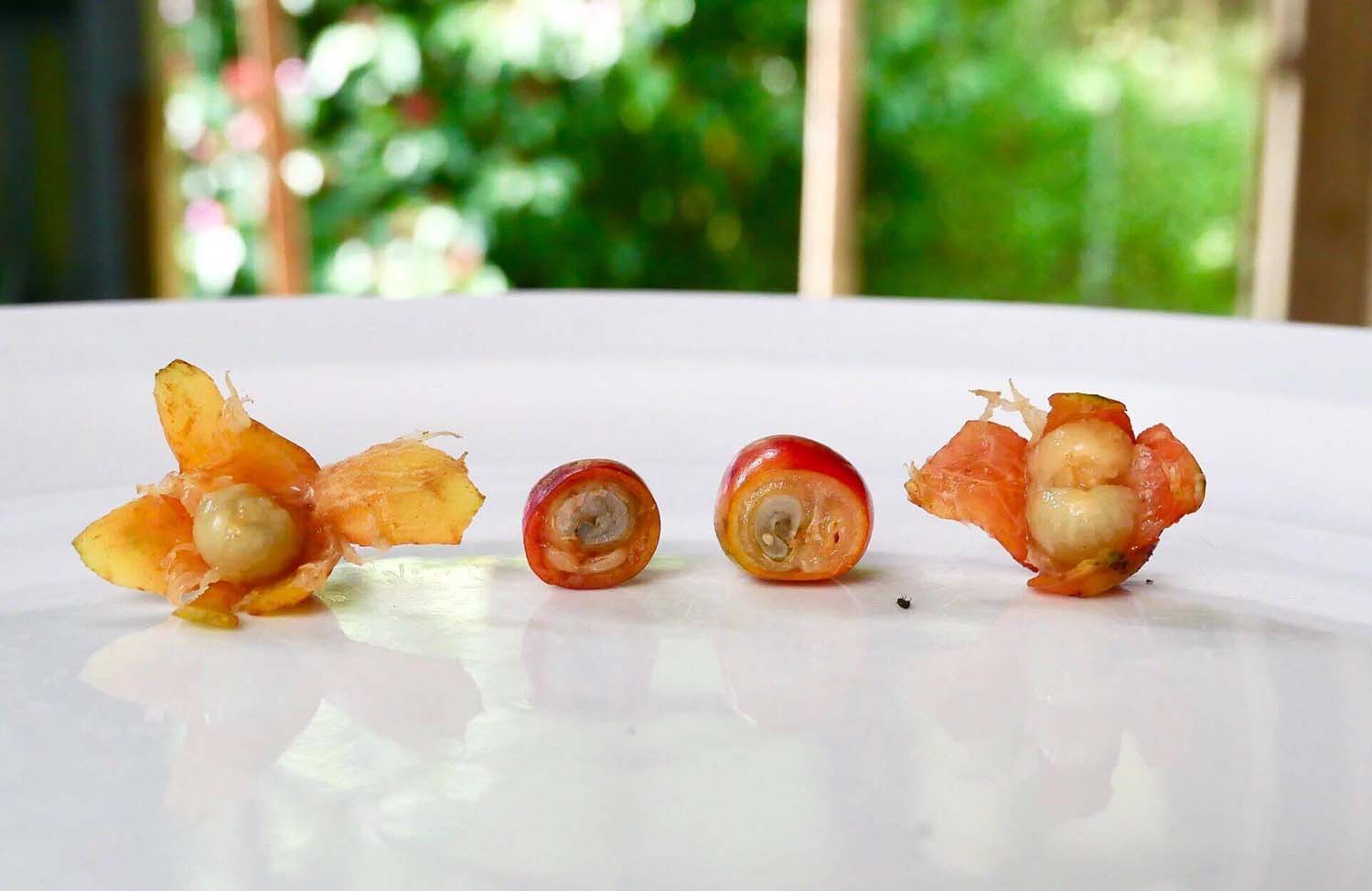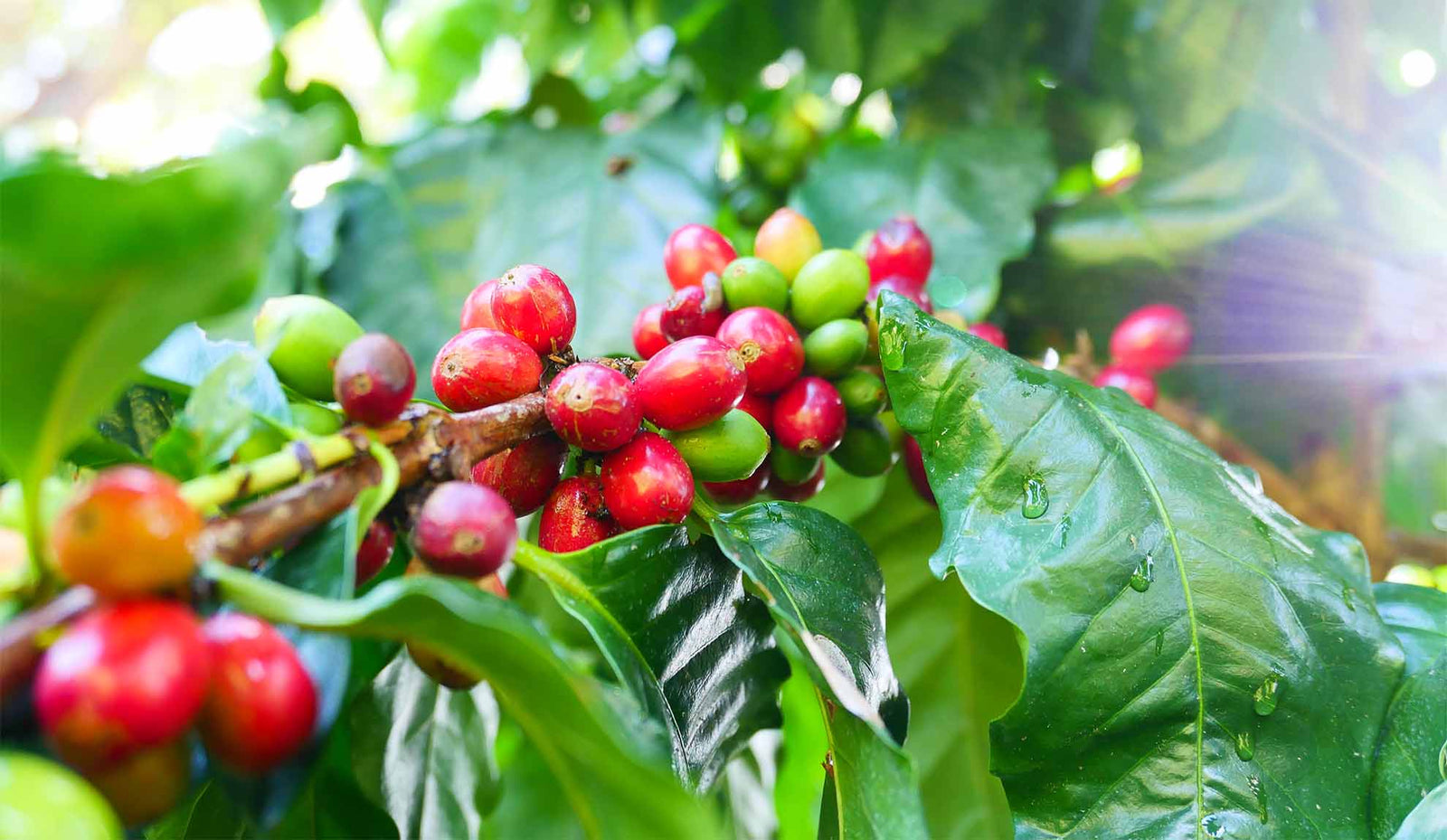When it comes to understanding coffee production statistics in Hawaii, it’s important to look for trends in the data. Each season yields a certain amount of coffee cherry and green bean, making it possible for growers to look for patterns and try to understand how their farms might perform in future years. Taking a look at each season and each region separately is crucial to this understanding, so let’s break it down, piece by piece.
Total Coffee Production in Hawaii
While the total amount of coffee yielded on the Hawaiian Islands since 2015 has steadily increased, delving into the details of the data reveals an interesting story aboutwhycoffee production has increased.
The 2015 - 2016 season was the smallest of the three highlighted here in terms of bearing acreage, but it wasn’t far behind the acres used in the 2016 - 2017 season. For 2015 - 2016, the bearing acreage, or total acres of coffee in production, was 6,900. The total production for these acres was 31,740,00 pounds, and the utilized production or the amount of this green coffee that was sold was 30,137,000 pounds. In these years, coffee cherry -- the raw fruit harvested from the trees -- sold for $1.56 per pound. This is estimated to have produced 753,425 8 ounce cups of coffee in 2015 - 2016.
In the 2016 - 2017 season, the bearing acreage is the same, with 6,900 acres of coffee in use; however, the total production for those acres was smaller. The total production for 2016 - 2017 was only 29,260,000 pounds, and the utilized production was 28,571,000 pounds. We also saw the price per pound jump to $1.71. This produced approximately 714,275 8 ounce cups of Hawaii’s famous coffee for that season.
The 2017 - 2018 season saw a jump in bearing acreage but a drop in total production. For this season the bearing acreage was an impressive 7,200 acres, however, the total production was just 25,416,000 pounds. This means the utilized production was only 24,592,000 pounds, which was sold at a higher price of $1.78 per pound of coffee cherry. This produced about 614,800 8 ounce cups of coffee for that season, despite the jump in bearing acreage.
Production for Each Region Per Season
While Hawaii is primarily made up of eight main islands, only five produce coffee: Hawaii, Oahu, Maui, Kauai, and Molokai. Each of these islands has its own thing to offer, especially when it comes to agriculture and coffee production, so it’s important to consider what each island contributes to the yearly supply of coffee in Hawaii.
Hawaii Island Coffee Production Statistics
Hawaii is the largest of the eight main Hawaiian Islands, and it’s responsible for the production of multiple subregions (or districts) of coffee per season.

Kona Coffee Production Statistics
For the 2015 - 2016 season, there were approximately 3,800 acres of land used for farming Kona coffee alone. There were approximately 900 farms growing Kona coffee during this time, and this yielded approximately 20 million pounds of coffee cherry that ranged from 4,200 - 7,400 pounds per acre.
In the 2016 - 2017 season, Hawaii was affected by heavy and consistent rain throughout the year, resulting in a later bloom of Kona coffee than usual. However, this bloom actually ended up being the most concentrated bloom in history. This season produced 2.4 million pounds of green Kona coffee from about 900 farms.
Ka’u Coffee Production Statistics
For the early 2015 season (during the spring and summer months), it is unknown exactly how many farms in Ka’u were growing coffee, however about 3,276,000 pounds of coffee cherry was produced, approximately 4,500 pounds per acre. In late 2015 and early 2016, though, there was a spell of severe cloud cover that affected the flowering and led to a poor yield for that period. There were also complications in production due to severe wind and minor drought. There was a wide range estimate of acres in coffee production -- between 660 and 830 acres -- tended by approximately 83 farmers, leading to an average of about 3,000 pounds of coffee cherry per acre.
For the 2016 - 2017 season, Ka’u had about 500 harvest acres, which resulted in 4.8 million pounds of coffee cherry and 351,750 pounds of green coffee beans. It is expected that the coffee market in Ka’u will continue to grow, however, there might be obstacles such as immigration policies and labor laws, as well as the presence of the black twig borer and the coffee berry borer.
Puna Coffee Production Statistics
Puna coffee is actually designated as Hawaii county because the state does not recognize Puna as its own coffee growing region. For the 2015 - 2016 season, there were about 20 farms active in Puna and 70 acres in production, which produced about 3,500 pounds of coffee cherry per acre. During this season, severe rain caused a 30% loss of crops. The same was true for the number of farms and acres active in the 2016 - 2017 season; however, there was no weather reported to have affected the amount of coffee produced during this season.
Hamakua Coffee Production Statistics
The last coffee growing region on the Big Island is the one for which we have the least amount of data. With only 15 farms and 45 acres producing coffee in the Hamakua district, it’s hard to say exactly how much coffee cherry was produced between 2015 and 2018.
Maui Coffee Production Statistics
Maui is the second largest Hawaiian Island and the third largest coffee producing region in Hawaii. During the 2014 - 2015 season, Maui had 390 acres in production and 345 acres harvested in Lahaina which yielded 1,750,000 pounds of coffee cherry from four different varieties. There were a few factors that impacted this season’s harvest, including a mechanical harvester breakdown that resulted in a 20% smaller harvest than the previous season. For the Maui Coffee Association in Upcountry and Windward Maui, 21,391 pounds of coffee cherry were harvested by 14 growers for the 2014 - 2015 season, which was partially due to wetter weather than in the previous season.
In the 2015 - 2016 season, Maui’s Lahaina area had 420 acres in production and harvested 500,000 pounds of coffee cherry. There was quite a lot that affected this season for Maui, including flowering events that were spread wide apart, which led to some large losses because of the plants that flowered late as well as the high amount of immature green berries that were still present during the harvest. The weather also drastically impacted Maui’s harvest as the island reported extreme rainfall. In addition, there was a large presence of green scale, ants, and Cercospora (a fungal disease), which affected the plants. Growers also heavily pruned their plants during the previous season, which drastically reduced the amount of coffee harvested in 2015 - 2016.
The 2016 - 2017 harvest yielded the largest amount of coffee cherry in the past three seasons but with the smallest amount of acreage. Maui harvested 2 million pounds of coffee cherry from only 315 acres, yielding 400,000 pounds of green coffee. Acreage is expected to expand over the coming years, which will keep this large harvest consistent.
Kauai Coffee Production Statistics
Kauai is a small Hawaiian Island, but it’s a huge coffee producer. For the 2014 - 2015 harvest, its whopping 2,450 acres produced 10.45 million pounds of coffee cherry and yielded 2.45 million pounds of green bean. On top of these huge numbers for a tiny island, it’s important to note that this yield was actually smaller than expected due to natural cycling and environmental factors that got in the way, including a late harvest and heavy rainfall.
During the 2015 - 2016 season, Kauai had three commercial coffee farms in production on over 3,000 acres. This resulted in 1.8 million pounds of green bean with an average of 4,600 pounds of coffee cherry per acre. This yield was definitely smaller than the previous season, partially due to maunaloa vine (an invasive species), a dry winter, and rain during the peak harvest. Farmers also rationed water on 1,000 of those acres.
In the 2016 - 2017 season, Kauai also had three commercial farms working on 2,515 acres. This ended up producing a huge 10 million pounds of coffee cherry for the season, yielding 2.3 million pounds of green beans. However, this season’s yield was reduced from what was expected due to a 50 - 60% water deficit that occurred throughout the summer.
Oahu Coffee Production Statistics
Oahu holds the largest population in the Hawaiian Islands and is home to the state’s capital: Honolulu. There were a few things that affected the yield of the 2014 - 2015 season, including a large storm that came through which stripped the coffee fruit off many of the trees.
For the 2015 - 2016 season, Oahu reported two commercial coffee farms with over 175 acres in total. One of the farms, Waialua Estate Coffee, reported between 3,000 and 7,000 pounds of cherry per acre, resulting in an approximate total yield of 325,000 pounds of cherry. 2015 - 2016 also had a particularly rainy winter and spring, with a very hot and dry summer, leading to lower production than expected.
For the 2016-2017 season, Oahu had 155 acres of Typica variety, which produced 423,000 pounds of cherry and less than 100,000 pounds of green beans. This was affected by the fact that 25% of the active acreage underwent stump pruning during this season.
Molokai Coffee Production Statistics
Molokai is the smallest Hawaiian Island growing coffee, but it is still an active coffee producer. In fact, one of the main things to do as a visitor to Molokai is to tour the one 500-acre coffee farm. However, despite its prominence in producing Hawaiian coffee, Molokai’s production does lack statistics for several years. For the 2014 - 2015 season, Molokai reported 285,000 pounds of coffee cherry harvested under a new owner.
For 2015-2016, it is unknown how many pounds of cherry was harvested, but it is confirmed that 123 acres of coffee were actively growing the Red Catuai varietal.
Summary
For the majority of the state of Hawaii, coffee production has remained fairly steady over the years. Of course, the amount of coffee produced increases and decreases with environmental factors such as weather and pests. Overall, the amount of coffee produced over time has stayed fairly solid. The numbers don’t lie. They’re the best way to really understand coffee production patterns in this state that has so many different growing regions.




